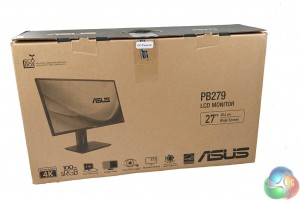
The Asus PB279Q ships in a large plain looking brown box with an image of the monitor, alongside some specifications. The box dimension is (WxHxD): 753x452x224 mm – and it weighs around 10kg all in.
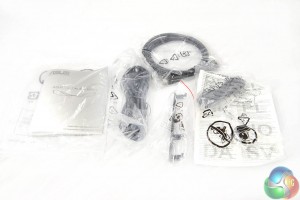
We didn't receive a fresh, sealed review sample from ASUS and it would appear a few cables were missing from our box – if we base it against the accessories list on the ASUS website anyway.
- Audio cable
- Power cord
- DisplayPort cable (Optional)
- Quick start guide
- HDMI cable (Optional)
- Warranty Card
- MHL cable (Optional)
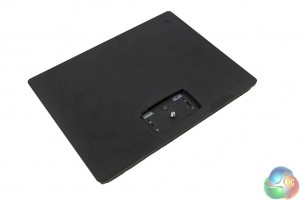
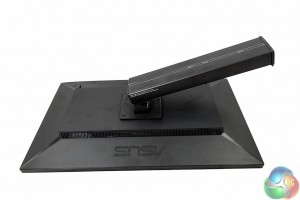
The monitor stand is already fitted to the panel, out of the box. It ships in portrait mode. The base is tool less, and attachment is straightforward.
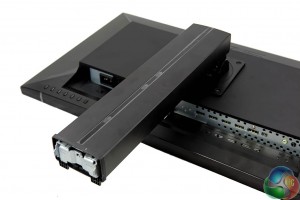
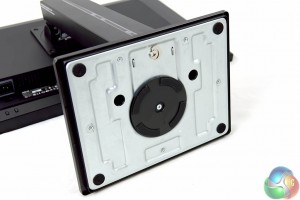
The base is heavy, as it is constructed from metal – shown above.
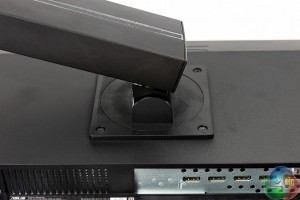
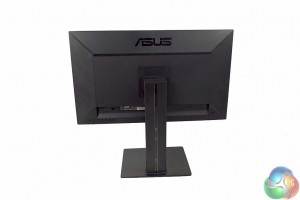
The monitor stand can be completely removed from the panel – for wall mounting.
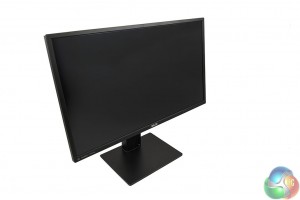
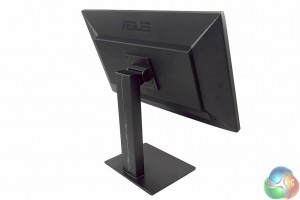
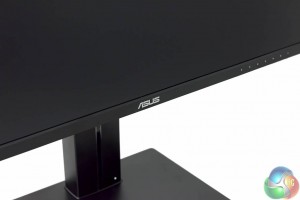
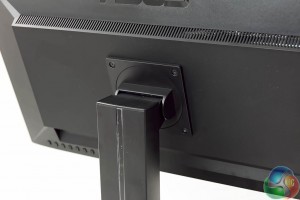
The Asus PB279Q is an attractive panel, although it isn't in the same league as their ROG Swift PG278Q G-Sync monitor which we reviewed way back in July last year. With the stand fitted we measured 624.96 x 407.76 x 220.06 mm with a weight just under 8kg.
The Asus PB279Q ships with two 2W speakers built in. As expected they are quite feeble and enthusiast gamers will want to add a good pair of speakers or headphones to enhance the experience.
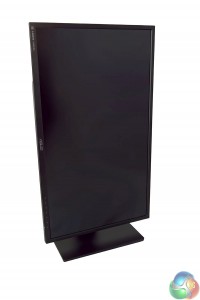
The panel can be rotated into portrait mode without any tools. Simply extend it to full height and push down on one side – it will snap into place.
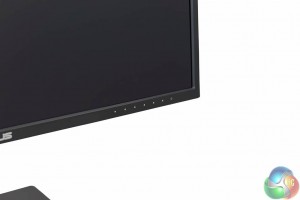
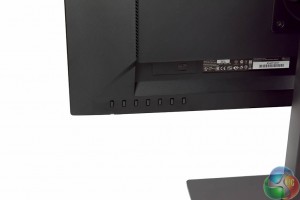
The interface panel is on the right of the screen. There are physical buttons on the rear, although we would have preferred if ASUS had moved the power button a little further away from the main menu buttons. We find many manufacturers overlook this for some reason – when you are fumbling around the back of the panel it is easy to accidentally press the power button.
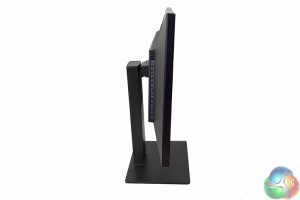
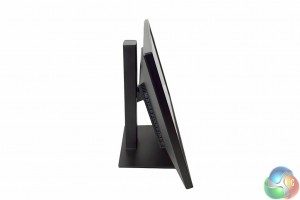
The main screen can be tilted between a range of +20°~-5°. There is full swivel and pivot support. Height adjustment is also supported to suit a variety of desk placements.
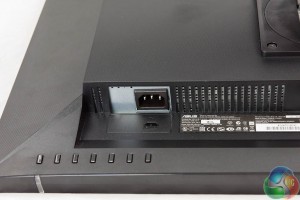
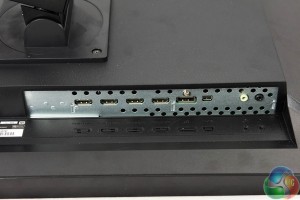
Interesting to see that the power adapter is inside the panel – you can simply attach any standard power cable directly to the screen. On the right side of the screen is the I/O panel.
Signal Input : 4x HDMI/MHL, 1x DisplayPort, 1x Mini DisplayPort
PC Audio Input : 1x 3.5mm Mini-Jack
Earphone jack : 1x 3.5mm Mini-Jack (for HDMI & DisplayPort Only)
 KitGuru KitGuru.net – Tech News | Hardware News | Hardware Reviews | IOS | Mobile | Gaming | Graphics Cards
KitGuru KitGuru.net – Tech News | Hardware News | Hardware Reviews | IOS | Mobile | Gaming | Graphics Cards
